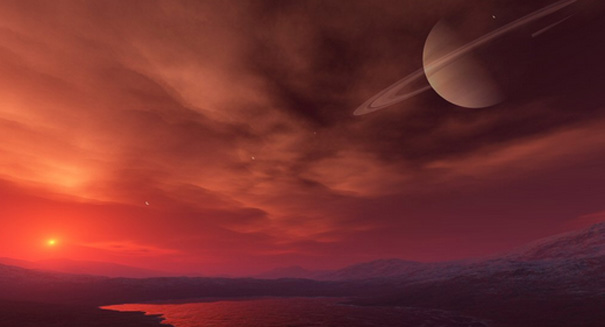
In an August flyby, NASA's Cassini spacecraft picked up two bright features in Saturn moon Titan's largest sea, with similar characteristics to a "magic island" feature captured in a separate sea in 2013.
A recent flyby of Saturn’s moon Titan from NASA’s Cassini spacecraft reveals the latest observation of features similar to what researchers have labeled the “magic island” on the moon’s Ligeia Mare sea.
According to Nature World News, photographs of the Ligeia Mare in 2013 uncovered a light patch of unknown material that could be viewed much like a large island. Flyby observations following these photographs determined that the pseudo-island continually disappeared and reappeared with time, suggesting that the light patch could actually be floating material, icebergs, or mats of bubbles from subsea vents instead.
In the most recent flyby on Aug. 21, the Cassini spacecraft’s radar revealed two additional bright island-like features in Titan’s largest sea, Kraken Mare. “In contrast to a previously reported bright, mystery feature in another of Titan’s large seas, Ligeia Mare, the new features in Kraken Mare were observed in both radar data and images from Cassini’s Visible and Infrared Mapping Spectrometer (VIMS),” reported NASA in a recent statement. “Having observations at two different wavelengths provides researchers with important clues to the nature of these enigmatic objects.”
According to the statement, the VIMS data showed similarities to various other areas in Titan seas more commonly interpreted as waves or wet ground. This would support the two most likely explanations described by scientists, who state that the features are possibly waves or floating debris rather than an actual island.
Nature World News also reports that the composition of Titan’s seas, compared to those of Earth, make it much more difficult to analyze, as Titan seas are primarily made up of methane and ethane liquid.
While the flyby of Titan this past August marked the last opportunity for Cassini’s radar to observe Kraken Mare, the spacecraft is scheduled to observe the original “magic island” feature in Ligeia Mare in Jan. 2015. These findings will be presented this week at the Division for Planetary Sciences Meeting of the American Astronomical Society, held in Tucson, Arizona.
Leave a Reply